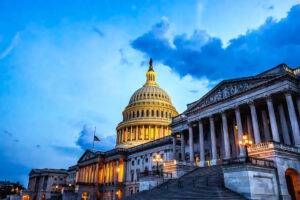

The IRS issued Notice 2023-62, extending the effective date for a new SECURE Act 2.0* Roth catch-up contribution rule for eligible participants with more than $145,000 in compensation. Under this new rule, catch-up contributions for such participants must be made to a designated Roth account (DRA). Notice 2023-62 extends the effective date from 2024 to 2026.
*SECURE Act 2.0 was enacted as Division T of the Consolidated Appropriations Act, 2023, Pub. L. 117-328, 136 Stat. 4459 (2022).
Notice 2023-62 also corrected a SECURE Act 2.0 error, which unintentionally repealed IRC Section 402(g)(1)(C). IRC Section 402(g)(1)(C permits catch-up contributions.
How We Got Here
Employees who meet a plan’s requirements for making salary deferral contributions (eligible participants) may make salary deferral contributions of up to $22,500 (2023 limit) to a section 401(k) plan), a section 403(b) plan or a section 457(b) plan maintained by a governmental employer. Additional catch-up contributions of up to $7,500 (2023 limit) are permitted for participants who reach age 50 or older by the end of the year.
Regular salary deferral and catch-up contributions are generally made on a pre-tax basis- thus reducing taxable compensation. Earnings grow tax-deferred and are included in the participant’s income when distributed.
For plans with a designated Roth account (DRA) feature, participants may make regular salary deferral and catch-up contributions to their traditional accounts, DRAs, or split between both. DRA contributions are made with income that has already been taxed. While earnings in a DRA grow tax-deferred, they are tax-free if certain qualifying requirements are met.
Typically, a taxpayer would choose between a tax-deferred and a DRA salary deferral contribution, based on which is more suitable from a tax planning perspective.
SECURE Act 2.0, signed into law on December 29, 2022, changes the rules for catch-up contributions made by eligible participants whose compensation exceeded $145,000 (indexed) for the preceding plan year. Only compensation from the employer that sponsors the plan is counted for this purpose.
Under the new law, catch-up contributions made by eligible participants whose compensation exceeded the $145,000 limit must be made to DRAs, effective for taxable years beginning after December 31, 2025 (extended from the SECURE Act 2.0’s effective date of taxable years beginning after December 31, 2023).
SECURE Act 2.0 also included language that made regular catch-up contributions obsolete after December 31, 2023. Notice 2023-62 confirmed this was unintentional, thus allowing plan participants to continue making catch-up contributions.
Neither of these provisions affect contributions to traditional IRAs, Roth IRAs, SEP IRAs, or SIMPLE IRAs.
Additional Guidance Forthcoming
The IRS promises to address outstanding issues in future guidance after they receive comments on Notice 2023-62. Outstanding issues include:
- Whether the new $145,000 rule applies to a participant whose compensation is not subject to the FICA Federal Insurance Contributions Act (FICA). For example, a participant who is a partner where the plan is adopted by a partnership, a self-employed individual, and certain other employees whose compensation is not subject to FICA.
- Whether the plan administrator and the employer would be permitted to apply the new $145,000 rule to an eligible participant who made an election to make catch-up contributions on a pre-tax basis. And,
- The rules that would apply to a plan that allows catch-up contributions but does not include a DRA feature. Presumably, if the plan does not have a DRA feature, participants with compensation of at least $145,000 for the previous year would be unable to make catch-up contributions.
Comments should be submitted in writing on or before October 24, 2023. See VI. REQUEST FOR COMMENTS of Notice 2023-62 for the requirements for submitting comments.
Until Then
With the correction, administrators and employers may continue allowing catch-up contributions. Additionally, employers and other stakeholders now have more time to make the changes needed to implement the new $145,000 rule for Roth-only catch-up contributions. But, for self-employed individuals and partnerships, the wait continues until further guidance is issued to determine whether they are subject to this new $145,000 rule. We will keep you posted.
Recent Stories
Next Up...
- |
- TaxByte
- |
- TaxByte
- |
- TaxByte





